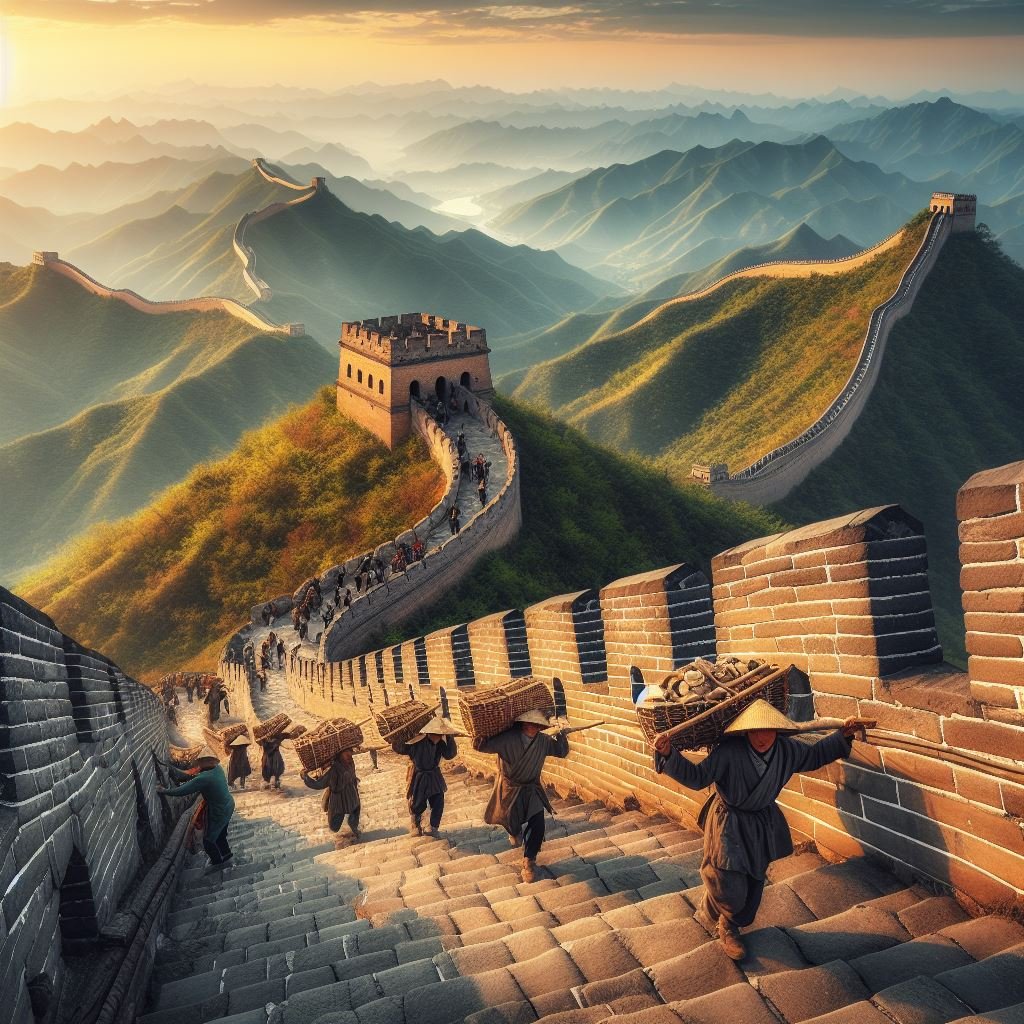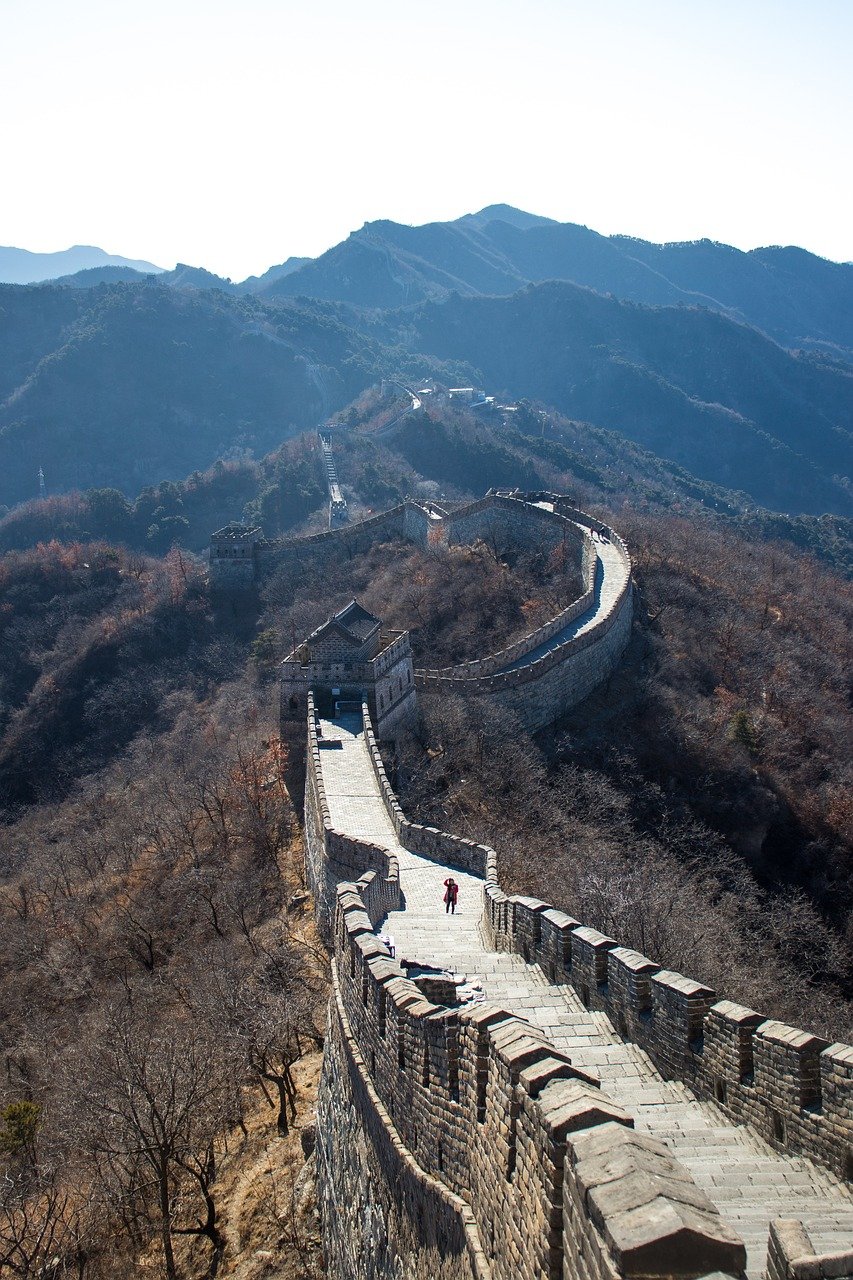The Great Wall of China: A Marvel Through Time
| Fact | Description |
|---|---|
| Length | Stretching approximately 13,170 miles (21,196 kilometers), it’s the world’s longest wall. |
| how long did it take to build the great wall of china | Approximately 2500 years |
| Construction Period | Built over centuries, with the most recognizable sections from the Ming Dynasty (1368-1644 AD). Initial construction began as early as the 7th century BC. |
| Purpose | Primarily built to defend against invasions by nomadic groups from the north. |
| Construction Materials | Varied depending on the region; packed earth in deserts, bricks and stones in other areas. |
| Not a Continuous Wall | A series of walls and fortifications built, rebuilt, and expanded over time. |
| Labor Force | Millions of workers, including soldiers, peasants, and prisoners, contributed. |
| Visibility from Space | Not easily visible without aid; astronauts report difficulty seeing it from low Earth orbit. |
| Watchtowers & Fortresses | Thousands served for surveillance, signaling, and housing troops. |
| Cultural Significance | A UNESCO World Heritage Site and a New Wonder of the World, holding immense value for China. |
| Tourist Attraction | Millions visit each year, with Badaling (near Beijing) being the most popular section. |
| Sections in Ruins | Many sections, especially in remote areas, are in disrepair due to erosion and human damage. |
| Symbol of China | Often regarded as a symbol of China’s strength, engineering prowess, and historical depth. |
Table of Contents
The Great Wall of China, a serpentine dragon of stone and earth weaving its way through rugged mountains, vast deserts and lush grasslands, is more than just a monumental wall. It is a tangible symbol of China’s rich history, a testament to human ingenuity and perseverance, and a UNESCO World Heritage Site that continues to inspire awe in visitors from around the world.
This blog explores the fascinating facts surrounding this iconic historical site, its origins, construction, evolution and enduring legacy.
A wall steeped in history: from the Warring States to the Ming Dynasty
The story of the Great Wall dates back 2,000 years, with its roots in the Warring States period (475–221 BC). In the race for dominance, independent states built fortifications on their borders. These fragmentary walls laid the groundwork for the more integrated structure that emerged later.
Qin Shi Huang, the ambitious first emperor of unified China (221–206 BC) is often credited with initiating the large-scale construction of the Great Wall. Their purpose was to add to and strengthen existing fortifications to create a barrier against nomadic incursions from the north. Brutal labor policies and harsh conditions resulted in the deaths of countless workers, a human cost forever recorded in the history of the Wall.
The Han dynasty (206 BC–220 AD) continued construction and expansion, extending the wall westward and incorporating new materials and technologies. Successive dynasties added their own sections, adapted the wall based on emerging military needs, and repaired damaged sections. The most recognizable and well-preserved sections of the Great Wall today date primarily from the Ming dynasty (1368–1644 AD).
Building a miracle: construction technology and materials
The construction techniques and materials of the Great Wall varied depending on the region and dynasty. Early sections primarily used rammed earth, a technique that involved compacting layers of earth and other materials. Later constructions incorporated stone, wood and even brick, depending on local resources.
Watchtowers, strategically placed along the length of the wall, served as observation and communication posts. Beacons atop these towers facilitated the transmission of messages, allowing quick response to potential threats. Garrison posts housed soldiers responsible for patrolling and protecting the wall.
The sheer size of the Great Wall is staggering. Estimates suggest its total length exceeds 21,000 kilometers (13,000 mi), passing through rugged mountains, vast deserts, and fertile plains. This massive structure serves as a testament to the organizational skills, engineering prowess, and determination of the Chinese people throughout history.
How long did it take to build the great wall of china?

The Great Wall of China is not a monument to any one era, it is a testament to more than two millennia of Chinese history. Unlike buildings built with intense effort, the Great Wall emerged from time to time, a protective measure against constantly evolving threats.
For more than 2,500 years, various dynasties tackled the mammoth task of securing China’s borders. Each era left its mark by adding sections of wall or reinforcing existing ones. The Qin dynasty (221–206 BC) is credited with the first major, integrated sections linking existing fortifications together. But it was the Ming dynasty (1368–1644) that really shaped the Wall we recognize today. He built on previous efforts on a large scale, significantly extending the reach of the Wall and creating the iconic structure we see in photographs.
Therefore, the Great Wall is not defined by a single construction date, but by the enduring spirit of China’s dynasties who contributed to this important work over the centuries. It is a story of perseverance and adaptation, a wall that rose and grew along with the nation to protect it.
The Great Wall: A Dragon of Stone and Soul
As the Great Wall of China stretches across the country like a coiled snake, its story is much richer than mere defense. It is a monument inscribed in history, a testament not only to military might but to the indomitable spirit of a civilization.
A steadfast tapestry
Beyond its role as a barrier, the Wall fostered a sense of unity. Its construction, a collective effort spanning dynasties, weaves a tapestry of shared purpose. Every brick laid, every stone lifted, was a thread binding together a vast nation. The Wall became a symbol – a physical expression of China’s strength and resilience, a declaration that whispered, “We stand together.”
Gateway to Exchange
The wall was not a separating barrier. Watchtowers, watchful eyes on the horizon, served not only as military posts but also as bustling outposts. Here, there was a flow of goods and ideas, which facilitated trade with nomadic neighbors. The wall became a bridge promoting cultural exchange and understanding, a testament to the interconnectedness of humanity despite perceived differences.
A heritage under siege
Today the wall stands in an injured state. Time, neglect and the relentless march of progress have taken their toll. Yet, an awakening stirs. Conservation efforts have begun, a race against further erosion, vowing to preserve this irreplaceable heritage.
A beacon to the world
This wall has become a global symbol from a symbol of national pride. Millions of people come to walk its ancient paths, a pilgrimage to touch history. Some sections, carefully restored, offer a glimpse of its former glory. Others, seasoned and raw, whisper stories of battles fought and sacrifices made.
A journey through time
The wall is not just made of stone and mud; This is the history of human experience. Every step echoes with the stories of countless workers who toiled in the hot sun, stories of soldiers who stood against the unknown. It’s a reminder that behind the grand narrative lies a human drama, a tapestry woven of sweat, sacrifice and unwavering determination.
Call of the Dragon
So, the next time you see the Great Wall, don’t just see a barrier. See a testament to the human will, a symbol of unity forged in hardship. May it inspire you to explore not only the physical structure, but the stories associated with each of its stones.
Will you answer the call? Will you walk the path of emperors and warriors, will you feel the stories of the past in the breeze, and stand on the ramparts where history itself unfolded?
FAQs
- Question 1: How long is the Great Wall of China?
A1: The Great Wall of China extends for approximately 13,170 miles (21,196 kilometers), making it the longest wall in the world. - Question 2: How long did it take to build the Great Wall of China?
A2: The Great Wall took about 2,500 years to build, with different dynasties contributing to its expansion and reinforcement. - Question 3: During what period was the most recognizable section of the Great Wall built?
A3: The most recognizable sections of the Great Wall were built during the Ming dynasty (1368–1644 AD). - Question 4: What was the primary purpose of building the Great Wall?
A4: The Great Wall was built primarily to defend against invasion by nomadic groups from the north. - Question 5: What materials were used in the construction of the Great Wall?
A5: Construction materials vary depending on the region, including packed soil in deserts and bricks and stone in other areas. - Question 6: Is the Great Wall a continuous structure?
A6: No, the Great Wall is a series of walls and fortifications built, rebuilt and expanded over time, not one continuous wall. - Question 7: Who built the Great Wall of China?
A7: Millions of workers, including soldiers, farmers, and prisoners, contributed to the construction of the Great Wall. - Question 8: Can the Great Wall be seen from space?
A8: The Great Wall is not easily visible from space without assistance; Astronauts report difficulty seeing it from low Earth orbit. - Question 9: What were watchtowers and forts used for?
A9: Thousands of watchtowers and forts along the Great Wall served for surveillance, signaling, and housing troops. - Question 10: Why is the Great Wall of China culturally important?
A10: The Great Wall is a UNESCO World Heritage Site and a New Wonder of the World, which holds immense cultural and historical value for China. - Question 11: How many people come to see the Great Wall of China every year?
A11: Millions of tourists visit the Great Wall every year, with Badaling (near Beijing) being the most popular section. - Question 12: What is the condition of the Great Wall in remote areas?
A12: Many sections of the Great Wall, especially in remote areas, are in disrepair due to erosion and human damage. - Question 13: What does the Great Wall symbolize for China?
A13: The Great Wall is often considered a symbol of China’s strength, engineering prowess, and historical depth.



